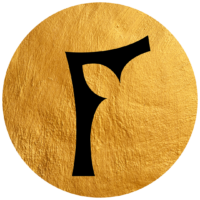Good fox, bad fox


📍 Kitsune (fox) at Fushimi Inari shrine
Fox, as the messenger of Inari (deity of paddy fields among other attributes), appear as statues to mark the shrines. Paintings and scrolls with kitsune (fox) as a white fox appear as a part of narrative paintings.
The kitsune sculptures at Fushimi Inari shrine comprise of over 25% of the total fox sculptures around shrines in Japan!
What is the significance of foxes in Japanese iconography? Ranging from being the cunning shape-shifters to the keepers of rice and granaries, fox in Japanese mythology they fulfil various roles. Bad fox (nogistune) and the good ones (yako or zenko) are often differentiated through colors and facial expressions in painting scrolls.
What about those in the sculptures? Generally the good foxes are located at the entrance of the Inari shrine as guardians in the vicinity of the Shinto shrines. More often, the good fox statues are marked by putting a red cloth (auspicious color, and color of Inari) on the fox’s body. And the bad ones – well, they are generally less in number of statues, and if at all present, are hidden in thickets or remote sites (such as a couple of kitsune statues in the Zoe fox village).
Holding a key to the rice granary at the Inari shrine, the kitsune greets the visitors to the shrine. Raised tail, and stern expression on the statue signifies its character as a guardian. The other kitsune of the pair greets the visitors with a pleasant expression. Both kitsune at Fushimi Inari have one-tail, while some kitsune represented as souls or spirits (especially in paintings) have more than one tail!
Do you know of the story of shape-shifting kitsune from the 8th century text Nihon Ryoiki?
“The story goes that once a man named Ono, from the village of Mino, longed for a beautiful wife. After searching far and wide, a beautiful lady walked into his life. They had a child, and around the same time their pet dog also gave birth to puppies. The she-dog became hostile towards the beautiful wife, and finally attacked her while baring her teeth. The wife could not contain her original form, and leapt over the fence in her kitsune form. Peering back at her house, her husband and child, she lamented to leave them behind. The good man Ono assured her that she will always have her place in his home, and so she visited him and their child every night from then on.” – Nihon Ryoiki
____ Sources ____
>> Miraculous Stories from the Japanese Buddhist Tradition: The Nihon ryoiki of the monk Kyokai – Translated and edited by Kyoko Motomochi Nakamura, Massachusetts: Routledge, 1997
>> Fox-wife motif in three Classical Japanese texts: Nihon ryoiki, Konjaku Monogatari Shu and Kotawa Kitsune – Julia Lynn Beebe, California: University of California Berkeley Press, 1997
